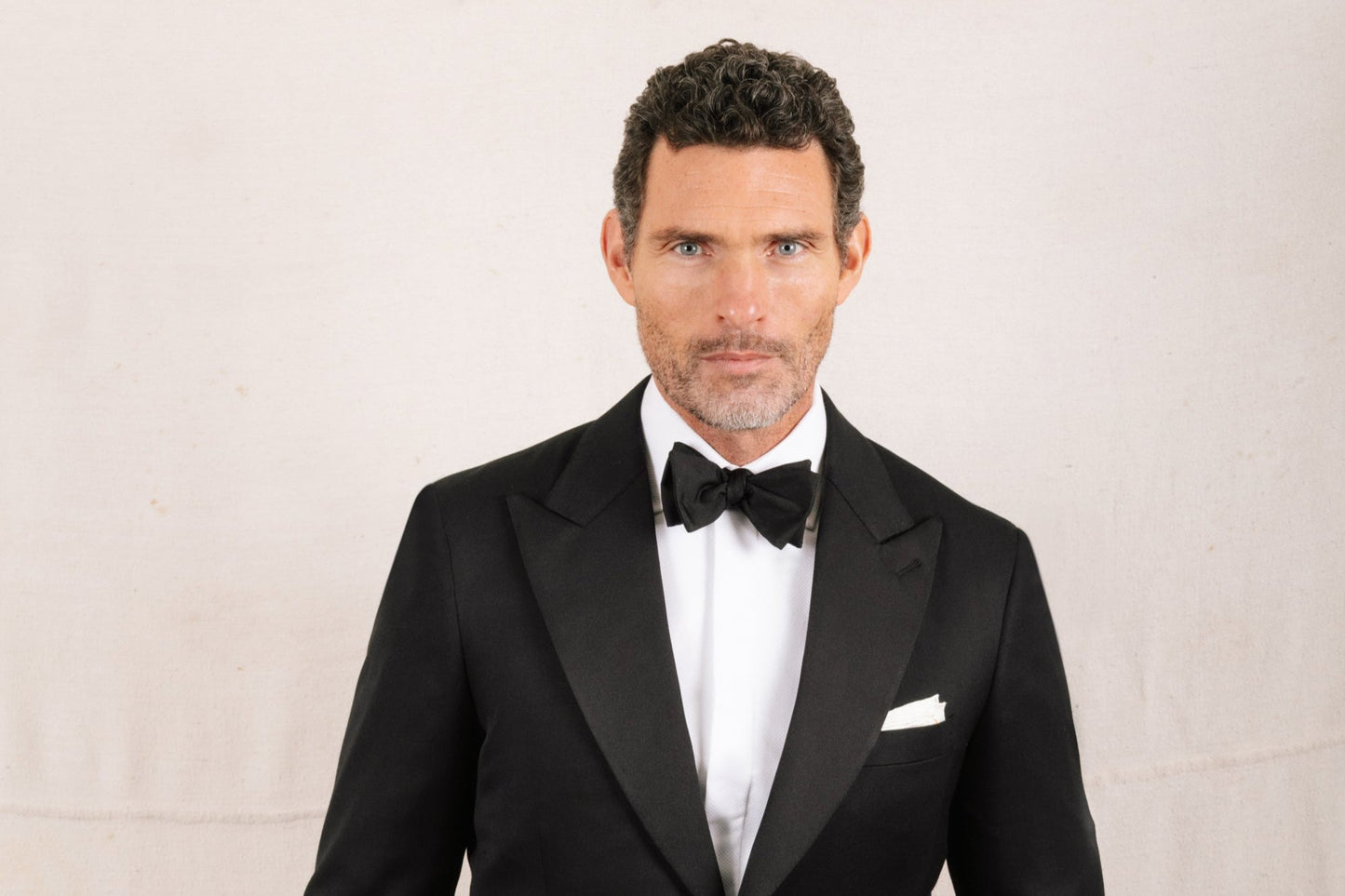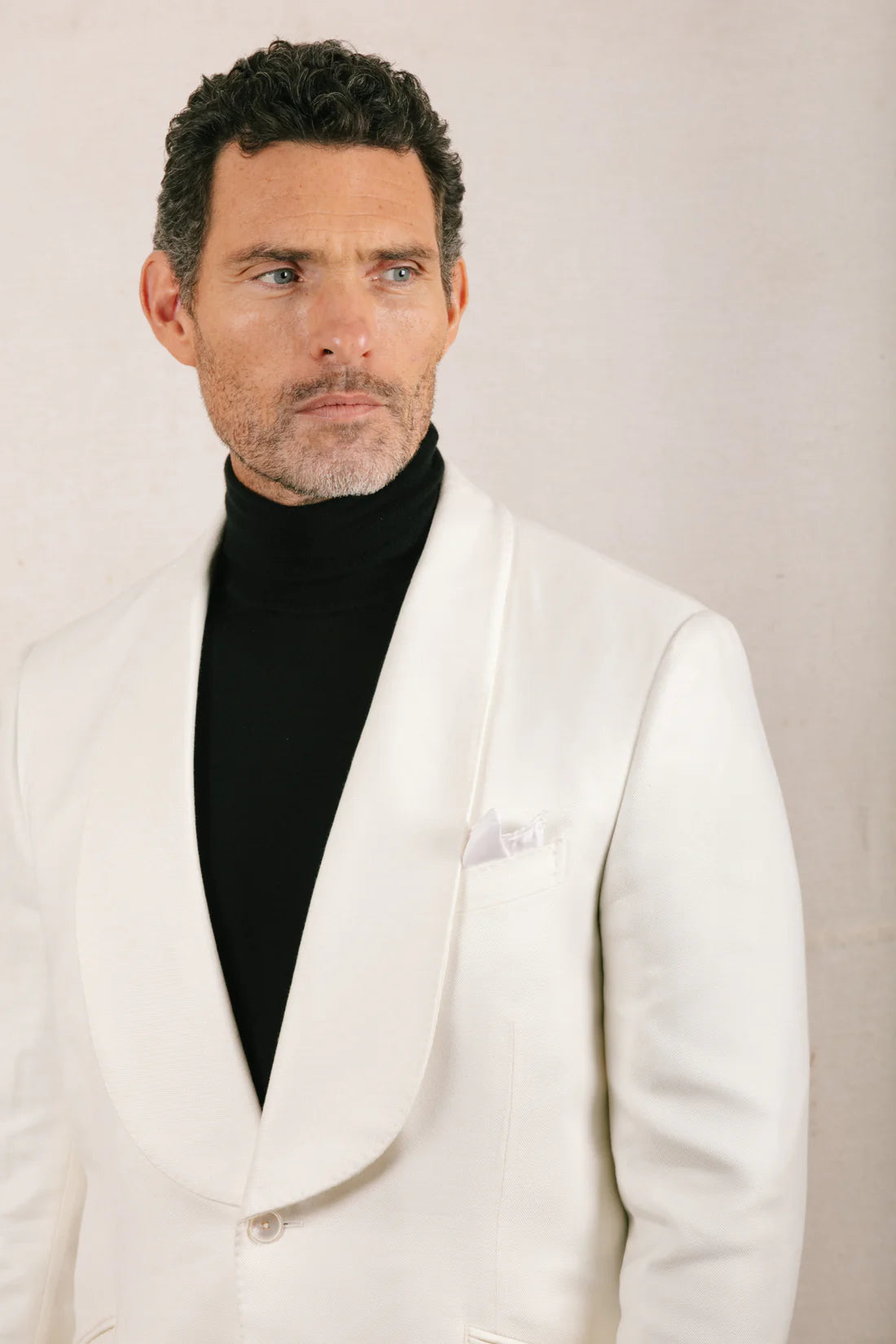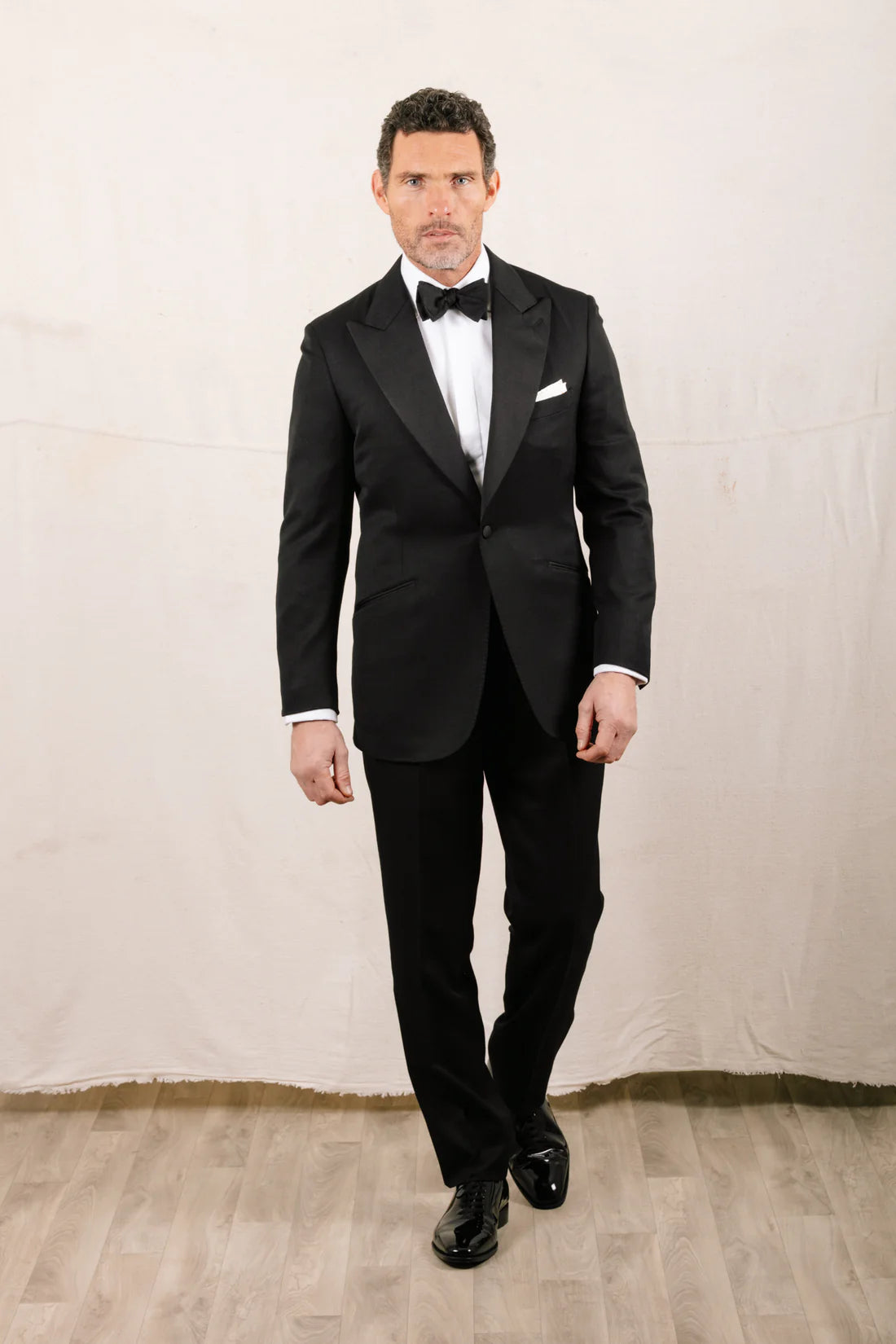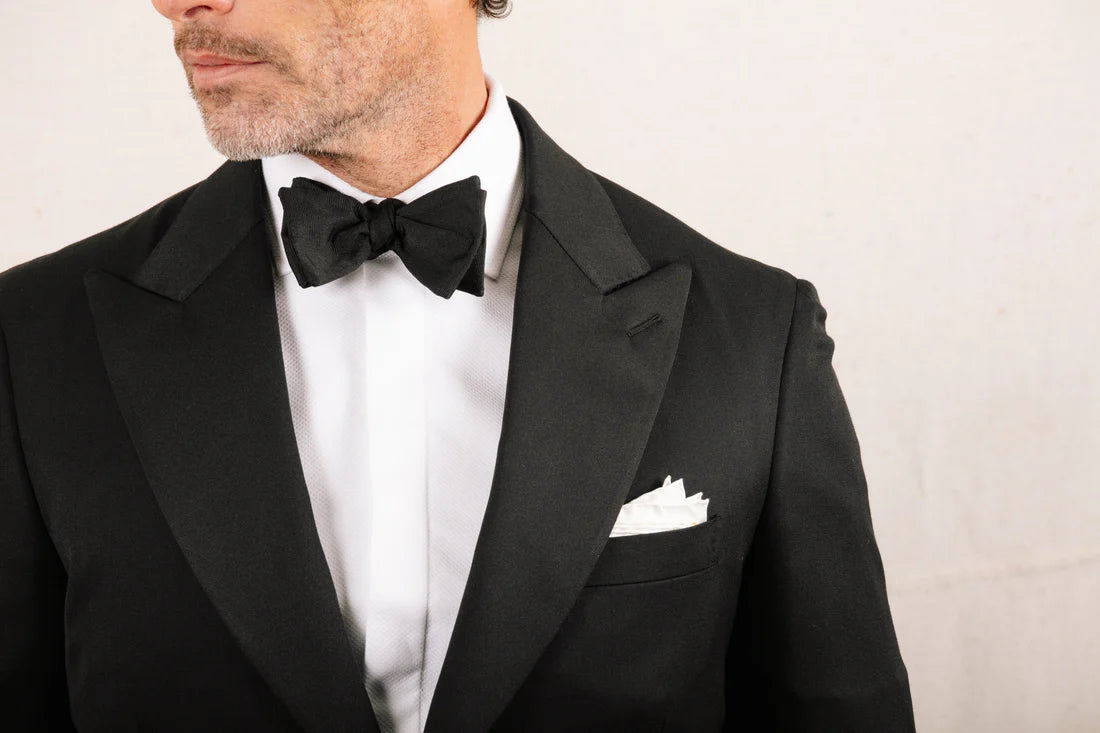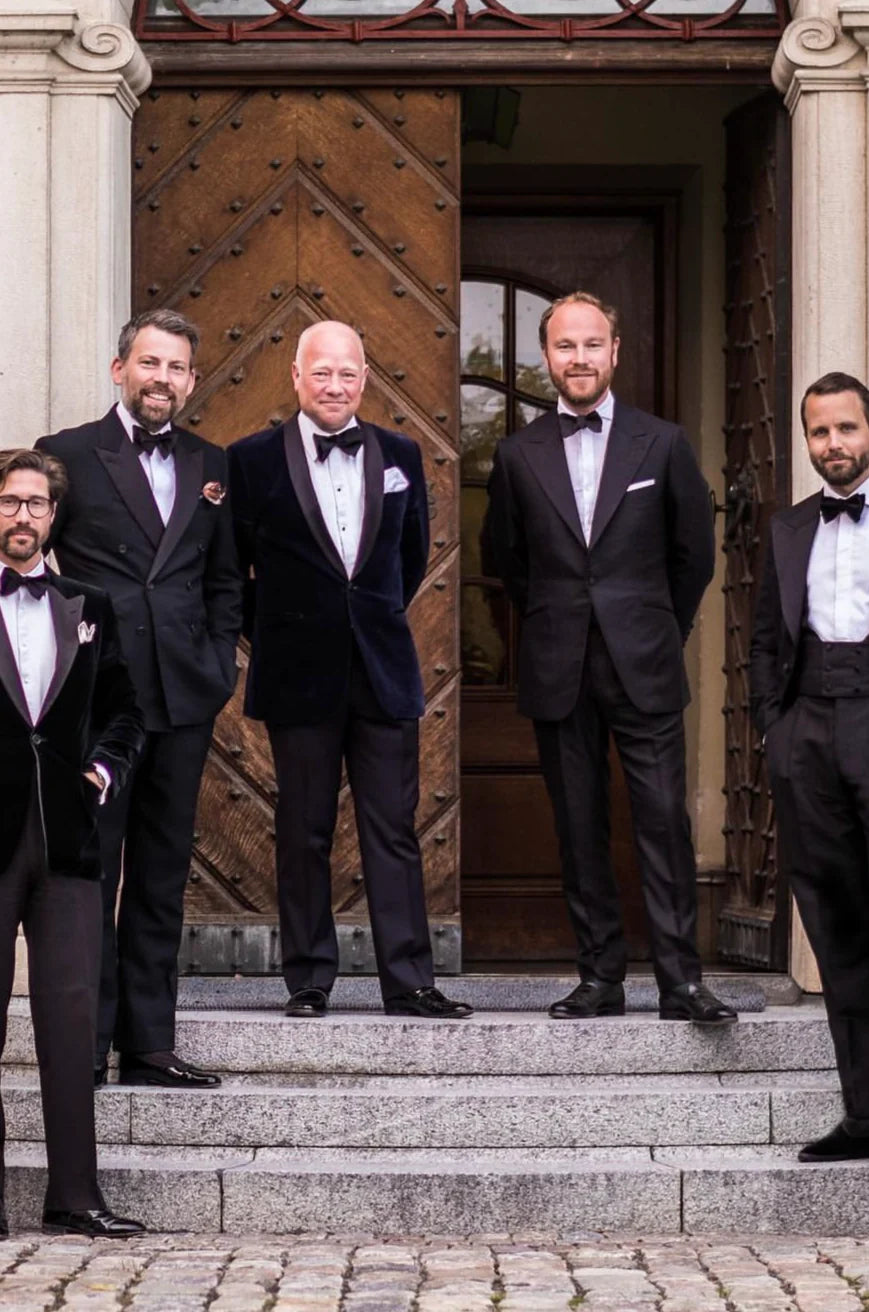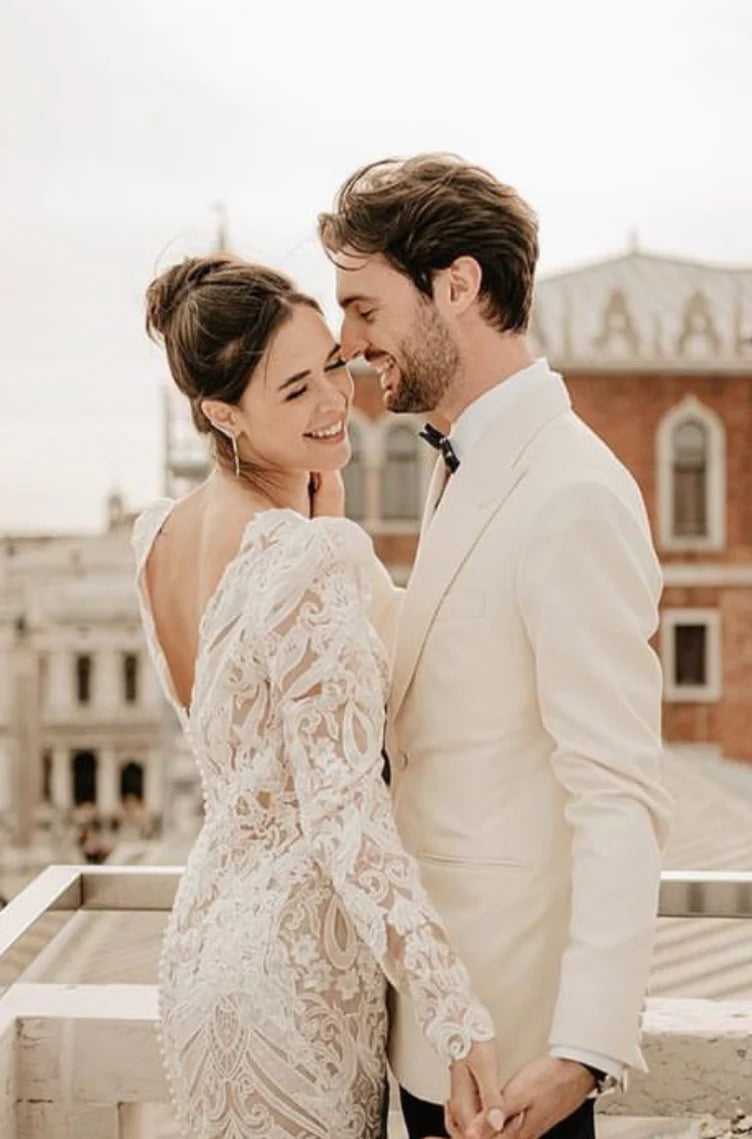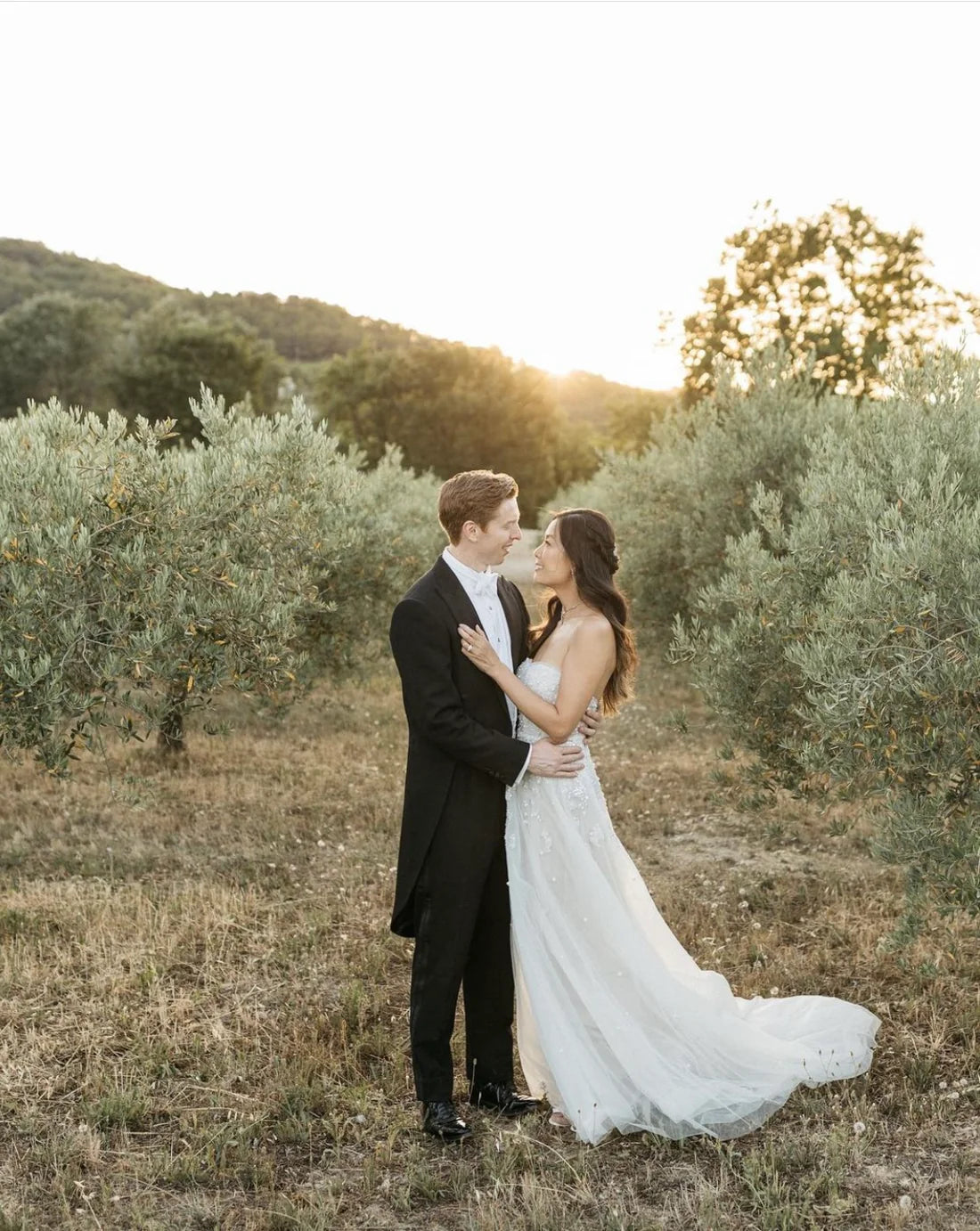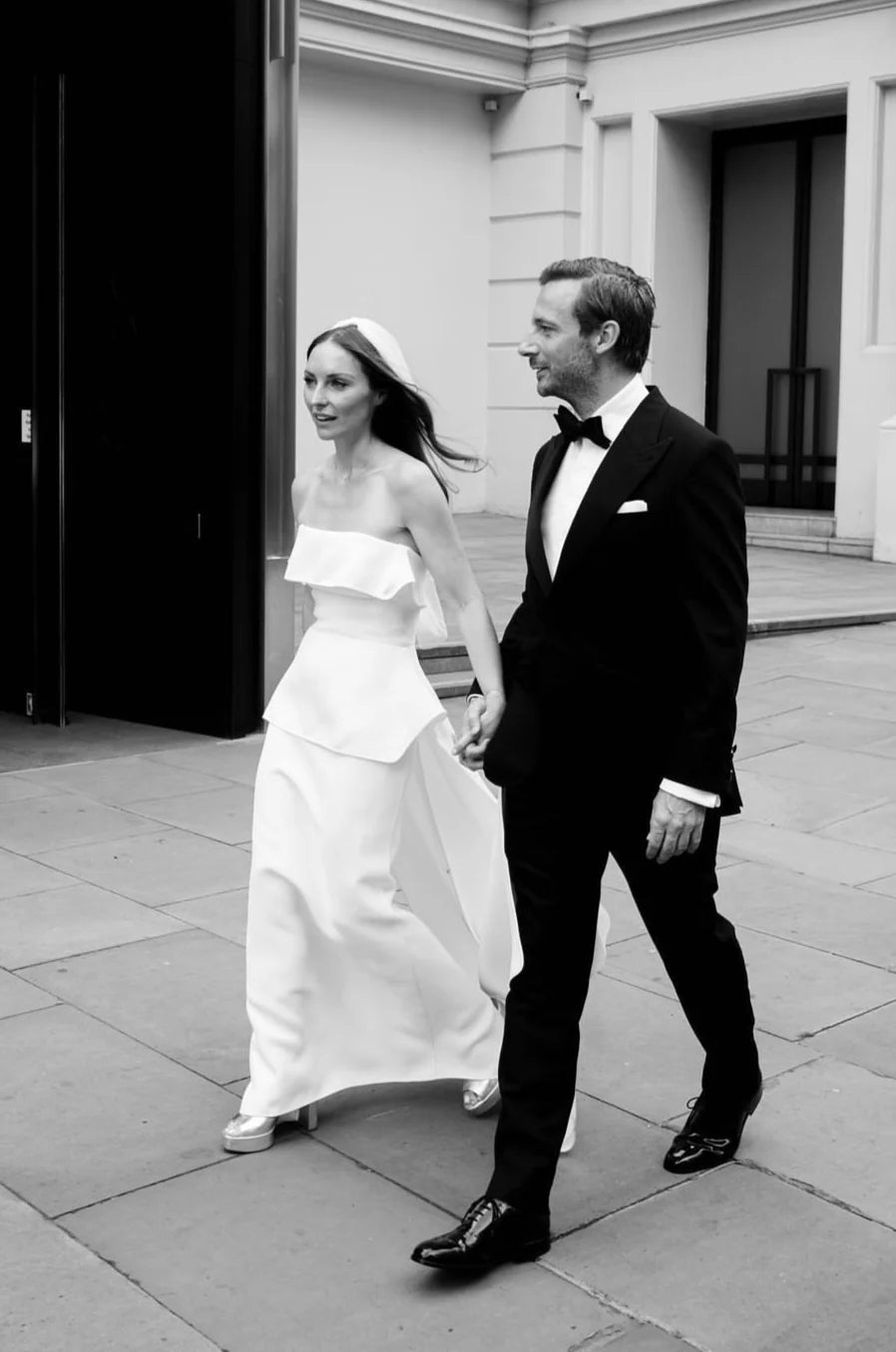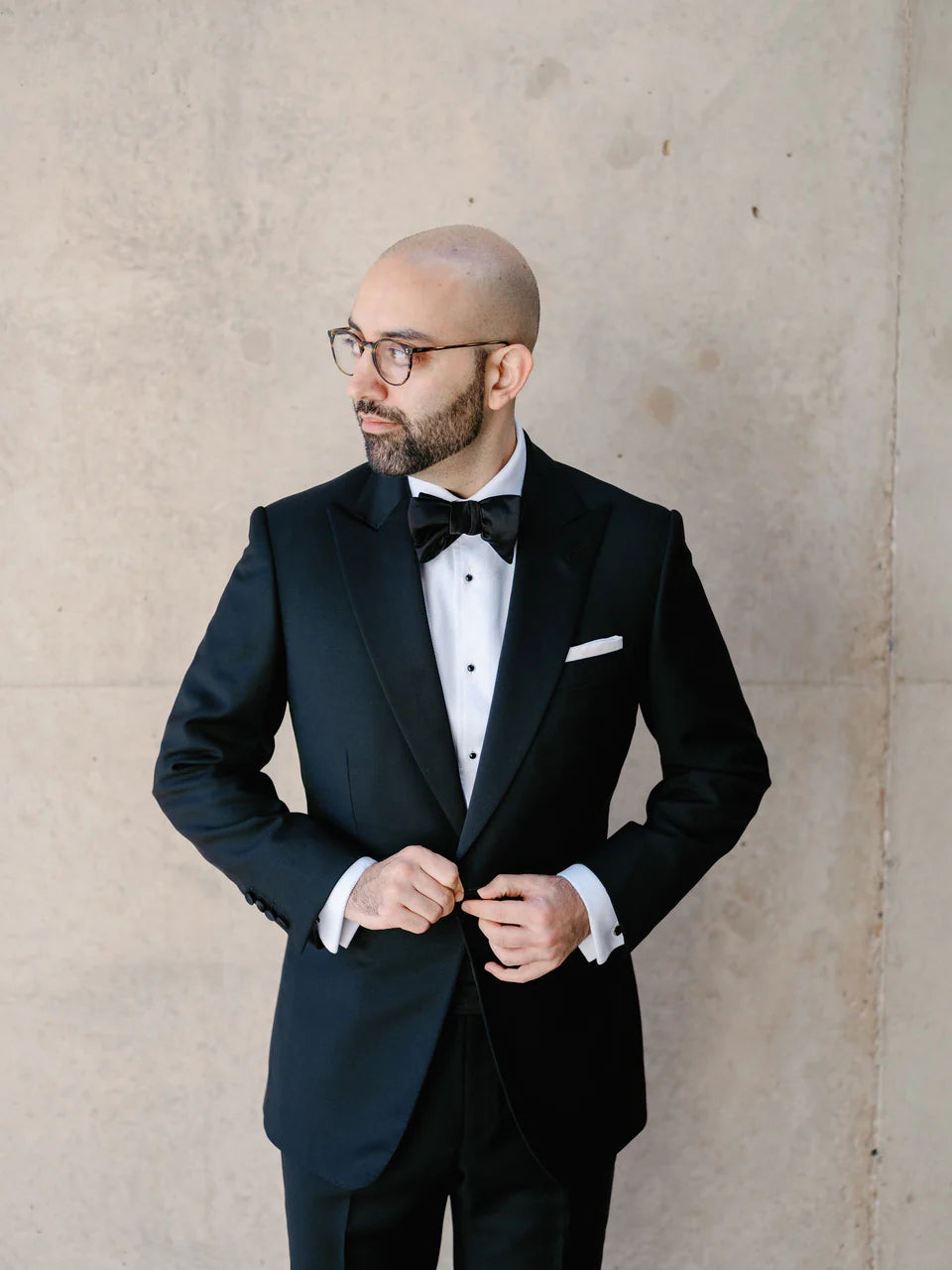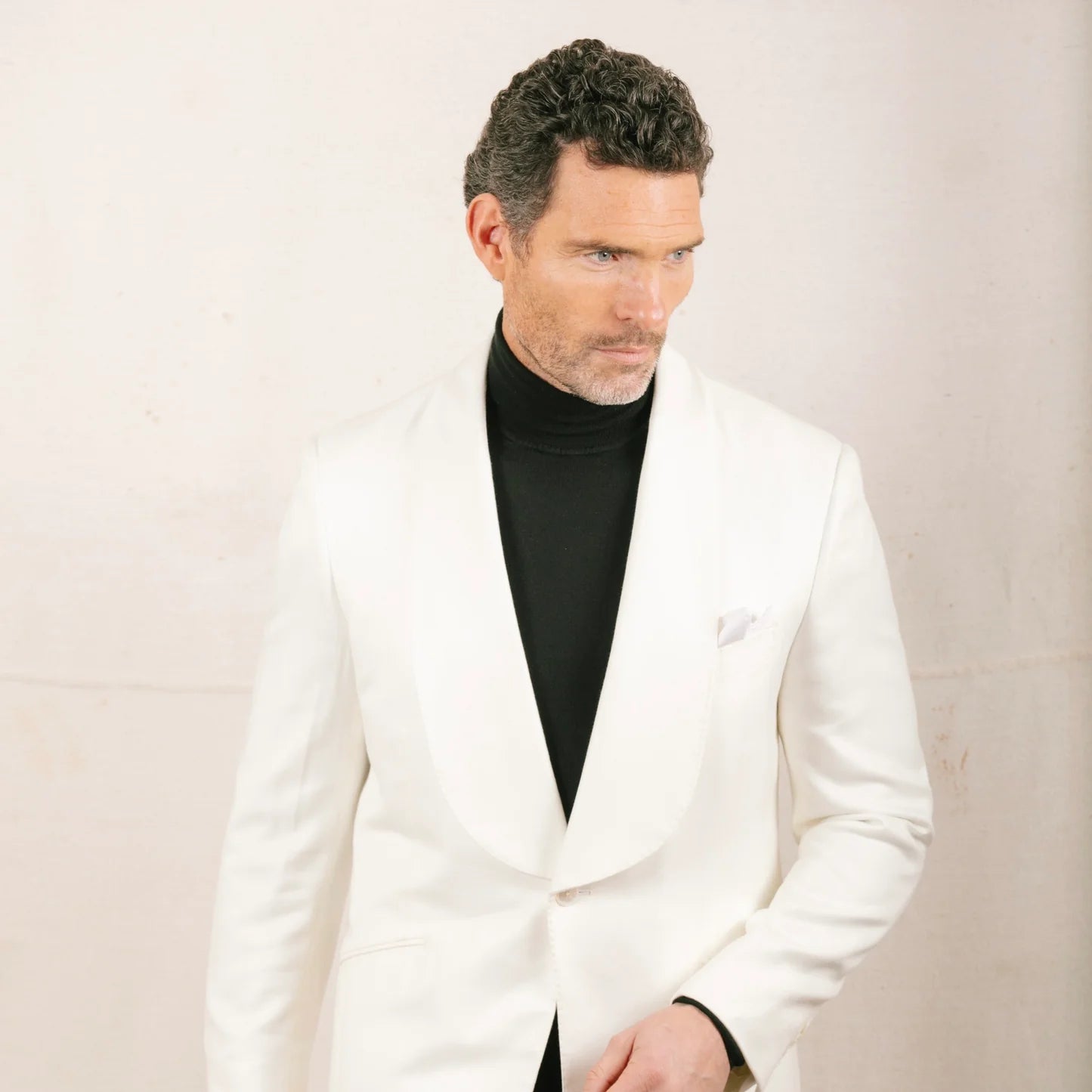
Formalwear
Formal wear is an overarching term for our most traditional forms of dressing. Whether it be a bespoke morning suit, dinner suit or white tie there is no more elegant form of dressing.

Any occasion that calls for such a dress code needs an ensemble that is both well considered and beneficial to the wearer. Simplicity is always key to ensure that the outfit looks elegant and timeless. Let us guide you through the relative merits of each formalwear cloth and the relevant style choices at each stage as we craft you an outfit that will last a lifetime and each time it is worn it will look as good as the day it was made.
At Cad & The Dandy we understand that the simplicity of these styles means that the cutting is absolutely key. Our team of tailoring experts ensure that every formal garment we make respects its classical roots whilst bringing the traditional firmly up to date.
With in-depth knowledge, our dedicated tailors are on hand to advise and guide you through the details and demands of your every bespoke formalwear need.
We have hundreds of classic cloths to choose from and garments range from simple dress shirts to full formalwear ensembles .
The process takes 8-10 weeks and our team will be on hand throughout to ensure a timely and stress free delivery.
Book a consultation at one of our New York, London or Stockholm locations below or read our Business Suit Guide below.
Book an Appointment
To book an appointment for a bespoke consultation, discover our latest Trunk Show news or simply get in touch, click the button below.
Formalwear Gallery
Formalwear Guide
“Formal.” Yes, you read that right. Not “business casual” or “creative cocktail” or any of the other confusingly coded terms that pop-up on wedding invitations these days.
The word alone can send a shiver down one’s spine and spur the invitee to desperately search the back of their closet for a cummerbund, if those are still required today (more on that later). However, there’s no need to fear formality. In fact, it could be argued that it’s far simpler to dress for formal occasions, as the three subcategories that fall under its umbrella black tie, white tie and morning suits observe rules that have scarcely changed for a century.
It’s in that spirit that we’re going to deliver a primer on each, so you won’t be caught flat footed the next time a wedding, a christening or perhaps even a royal audience is on your calendar.
Black Tie
The most recognizable of formal dress codes, black tie consists of a suit of clothes in either black or midnight navy. Where it differs from the typical lounge suit is that the jacket’s lapels, either peaked or shawl, are “faced” with silk, typically satin but sometimes a grosgrain. In any case, the silk used for the facing also appears as a stripe on the trouser.
This get-up, referred to as a “tuxedo” in the United States but known as a dinner suit in Britain, emerged in the late 19th century as an alternative to the long-tailed jackets then mandated for evening wear. It’s a rather ironic touch that what the Victorians would have regarded as more casual evening kit is today the most formal apparel that many men will ever wear.
The beauty of black tie lies in its simplicity. Jackets feature jetted pockets, rather than flapped or patch, and trousers have plain hems. While dinner jackets were traditionally unvented, many men today opt for side vents, which prove more comfortable while the wearer is seated and also help to prevent wrinkling.
The accessories associated with black tie should be similarly sober. Shirts will have either a pleated front, or more commonly seen today, a “bib” front made from pique cotton. In the past a wing collar would be the order of the day, though many men today are content with a simple spread. The shirt’s buttons should be attached via a removable strip, and in its absence metal studs can be used in the button’s place. The shirt’s sleeves should end in French cuffs, allowing the wearer to adorn them with cufflinks or a simple pair of silk knots.
There will be a bow tie, and it must be black. It will be made from silk and should match the dinner suit’s facings, either satin or grosgrain. So should the cummerbund, which originated during India’s colonial period. While a seeming anachronism, it would have been used to store tickets or cigar cutters at a time before dinner trousers had pockets, it in fact plays a very important role. By adding an extra element of “black” above the waistband, it elongates the legs and slims the waist.
Lastly, a pocket square may be included, but should not distract from the look’s monochromatic grace. So, stick to white cotton, and it not too showy of a fold.
Where men might have the most freedom in a black-tie get-up is in their choice of footwear. Patent leather pumps or highly polished black oxfords (look to Gaziano & Girling for a great take on the latter) are a conservative choice, while the more dandyish (or dance floor-inclined) among us can opt for opera pumps or black velvet slippers.
More on the subject...
White Tie
White tie is black tie’s older, grander brother, with origins in 18th century riding wear. That equestrian heritage helps to explain its most distinctive feature, a tailcoat that is short in the front but ends in split tails falling to the knee.
Aside from that tailcoat, it is quite similar to the dinner suit in its design and philosophy. It appears in midnight blue or black, with silk facings and trousers distinguished by a matching silk stripe.
White tie does introduce a third element to the mix, in the form of a white pique waist coat cut in a long, deep V that ends with three buttons. Because the front of the tailcoat is not meant to be buttoned, this vest will always be visible.
Between the vest and the tailcoat, a bib front pique shirt will be worn, with French cuffs and the more conservative wing collar. Similarly, the shoes overlap with what you’d wear for black tie, but on the more formal end, i.e. black patent pumps.
Finally, white tie calls for… a white tie. More specifically, a white pique cotton bow tie that matches the outfit’s vest.
Fabrics
As you’ve just read, formal wear remains a highly specialized field. And fortunately, there are fabric books engineered specifically for formal garments.
Among our favorites is Formalwear by Dugdale Bros & Co., which is composed of wool baratheas blended with silk or mohair to better catch the light, as well as striped wools intended for morning suit trousers. But perhaps no mill offers a more wide-ranging assortment for formal wear than Loro Piana, whose Events book is meant to fulfill orders for morning suits, tuxedoes, tailcoats and waistcoats, in fine fabrics including wool-mohair blends, Super 150s wool and 100% silks.

